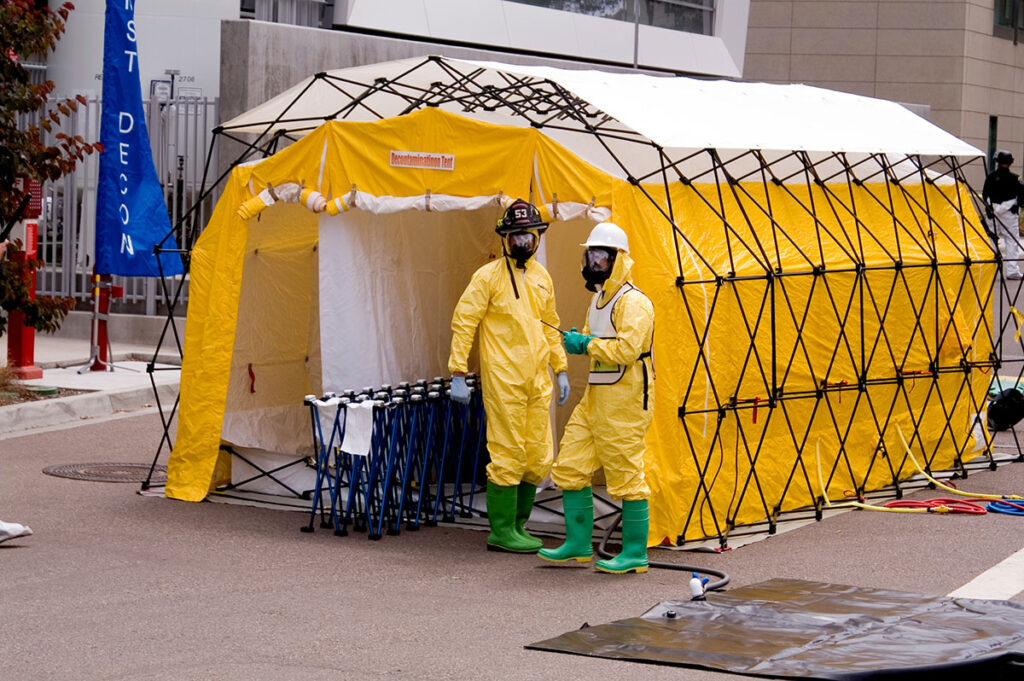A New Approach to Chlorine Exposure: GABA(A) Modulation as a Medical Countermeasure
A newly awarded research grant from the National Institute of Environmental Health Sciences (NIEHS), part of the National Institutes of Health (NIH), is set to explore a promising new avenue for protecting civilians and first responders from the toxic effects of chlorine gas. The $226,464 award supports a project titled “Medical countermeasures to chlorine exposure based on GABA(A) receptor targeting”, led by researchers at the University of Wisconsin.
The research is designed to test the efficacy of gamma aminobutyric acid type A receptor (GABAAR) modulators in mitigating acute lung injury (ALI) caused by inhaled chlorine—a potent industrial chemical that poses a significant threat in both accidental and deliberate release scenarios. The project contributes to the Chemical Countermeasures Research Program (CCRP), a national effort to strengthen medical response capabilities for chemical threats.
Why Chlorine? A Persistent Threat with Limited Treatments
Chlorine is widely used in industry, water treatment, and transportation, but it is also a toxic inhalation hazard capable of causing mass casualties in the event of accidental leaks or deliberate release, such as in terrorist attacks. Victims of chlorine exposure often suffer from airway inflammation, bronchospasm, and pulmonary edema. Current clinical interventions are limited to supportive care—such as oxygen therapy, bronchodilators, and corticosteroids—and must be administered in a well-equipped medical setting.
This reality highlights a critical gap in public health preparedness: the need for deployable, early-use medical countermeasures that can be administered in the field or in austere environments without specialized equipment.
The Science Behind the Strategy: GABAA Receptors as Therapeutic Targets
The new study aims to investigate a novel therapeutic approach using small molecules that act on peripheral GABAA receptors—a class of chloride channel proteins found throughout the body. Unlike central-acting GABAA modulators used in neurology and psychiatry, these compounds are designed not to cross the blood-brain barrier, thus avoiding central nervous system effects.
The lead candidate compound, MIDD0301, has demonstrated safety in both rodent and non-rodent species. Its mechanism of action centers on modulating intracellular chloride balance in lung tissues, which may reduce inflammation and airway constriction following chlorine exposure. The dual effects of bronchodilation and anti-inflammation offer a powerful combination for improving survival and recovery in chlorine-exposed individuals.
Project Design and Specific Aims
Using a well-established murine (mouse) model of chlorine gas inhalation, the research team will carry out in-life and postmortem assessments to evaluate MIDD0301 and compare it against other known agents. The project’s specific aims include:
- SA1: Testing the therapeutic effects of nebulized MIDD0301 in chlorine-exposed mice
- SA2: Measuring GABAA receptor protein and gene expression post-exposure
- SA3: Evaluating the therapeutic potential of intramuscular (IM) MIDD0301
These findings will inform future FDA submissions and potential field deployment of GABAA-targeted countermeasures under emergency use authorization.
Implications for National Health Security and Public Safety
This research is more than a scientific curiosity—it is a direct investment in U.S. chemical defense preparedness. The development of field-ready medical countermeasures that do not require advanced medical support is crucial for first responders, military personnel, and civilians alike. In mass casualty situations or large-scale chemical events, the ability to deploy effective treatments quickly could save lives and reduce long-term health impacts.
By focusing on inhaled and injectable formats, the project aligns with operational needs in CBRNE (Chemical, Biological, Radiological, Nuclear, and Explosive) defense, where rapid, scalable, and non-invasive medical solutions are a strategic imperative.
Real-World Incidents Reinforce the Need for Medical Countermeasures
The threat is not theoretical. Chlorine gas continues to be used in modern warfare, most notably by the former Syrian regime, which was confirmed by the Organisation for the Prohibition of Chemical Weapons (OPCW) to have deployed chlorine in the 2018 Douma attack—a finding published in 2023. More recently, Ukrainian defense officials and allies have accused Russian forces of using chlorine-based agents in combat zones. These incidents underscore the urgent need for medical countermeasures that can be rapidly deployed in the field. As geopolitical tensions increase and chemical weapons norms are increasingly broken with impunity, the ability to treat chlorine-induced lung injury with targeted, fast-acting therapeutics remains a pressing national and global health security priority.
Broader Relevance and Future Directions
For the general public, this work underscores the importance of sustained investment in biomedical innovation for emergency preparedness. From industrial accidents to potential chemical attacks, chlorine remains a real and persistent threat. Developing targeted, effective, and deployable treatments protects not just individuals at the scene, but strengthens the resilience of the healthcare system and national security infrastructure.
Moreover, this line of research may inform the treatment of other toxic inhalants and environmental exposures, expanding its potential benefit beyond chlorine-specific events.
Sources and Further Reading
- U.S. Department of Health and Human Services – TAGGS Award Detail: R21ES037250
- National Institute of Environmental Health Sciences – Countermeasures Against Chemical Threats (CounterACT) Program
- Centers for Disease Control and Prevention (CDC) – Facts About Chlorine
- U.S. Food and Drug Administration (FDA) – Emergency Use Authorization


